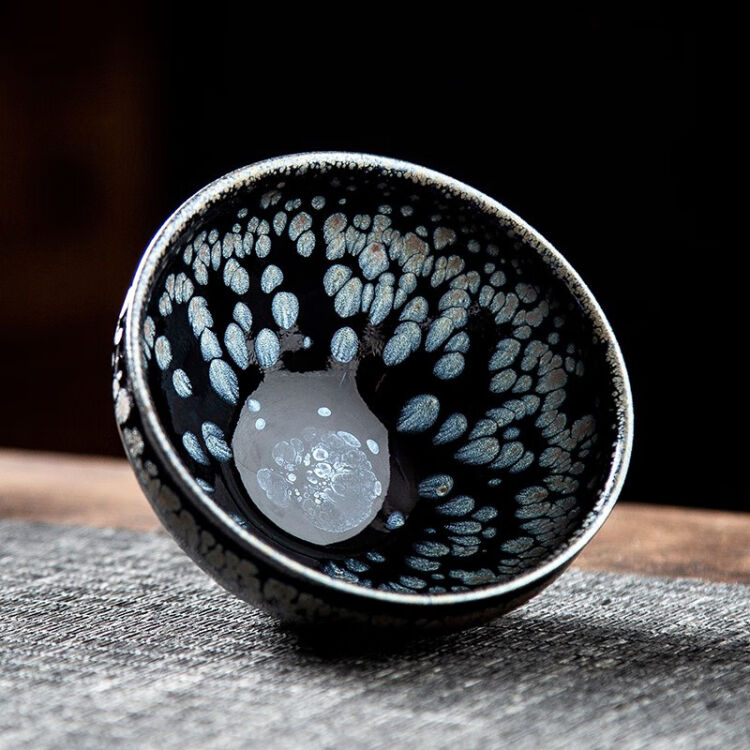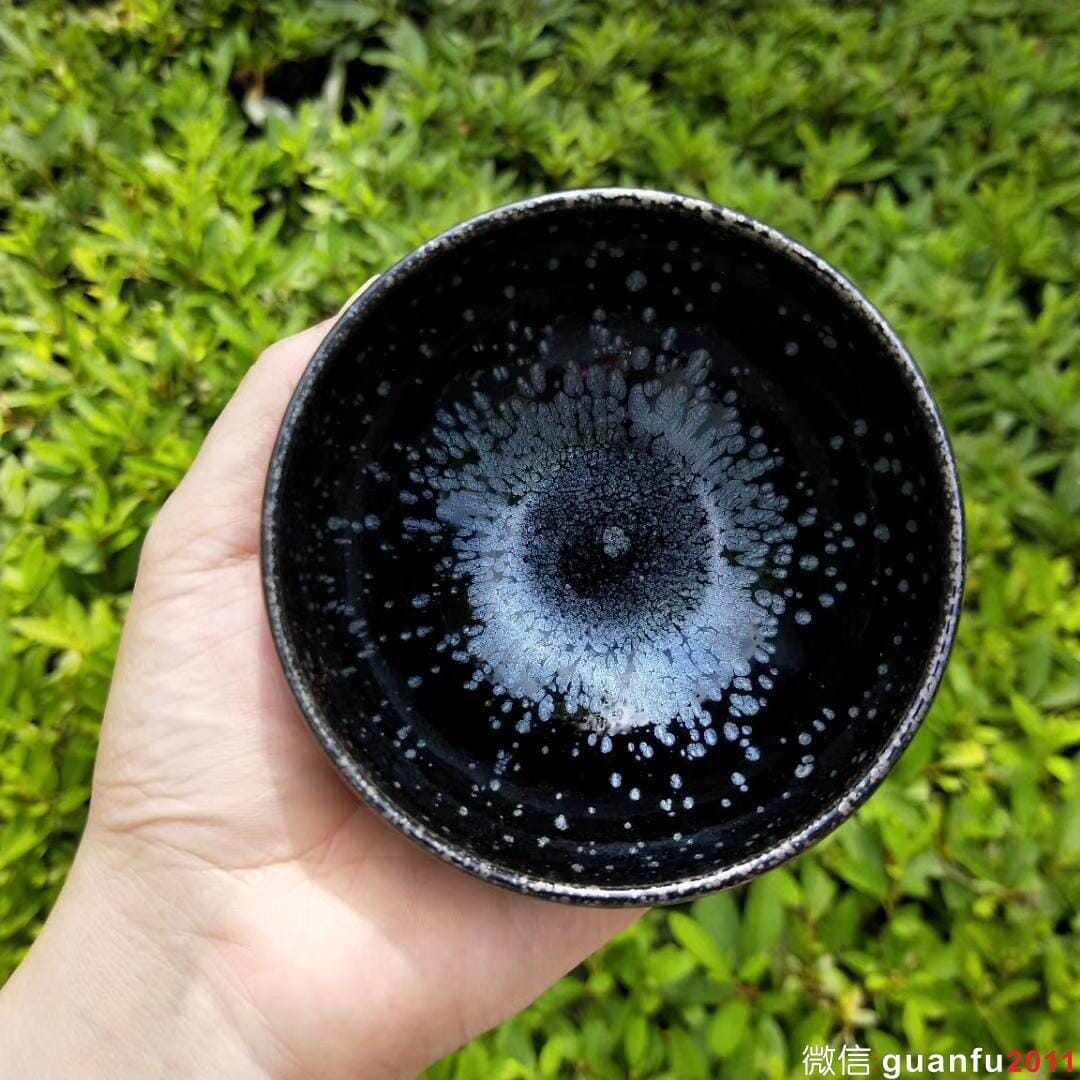If glaze color is the soul of Tenmoku,
then shape is its skeleton.
If we use a beautiful woman as an analogy,
glaze color is her appearance,
and shape is her figure.
The combination of these two elements is what makes an excellent Tenmoku.
As for Tenmoku, the glaze color, which is extremely distinctive and full of personality, has always been the focus of attention.
However, the shape of Tenmoku has been ignored for a long time.
But it is the fundamental aspect of Tenmoku.
The shape of Tenmoku is generally characterized by a large mouth and a small base, like a funnel.
Moreover, Tenmoku cups often have circular feet, and the foot edge is usually trimmed and chamfered, creating a slightly outward sloping base. A few small round bowls have solid feet.
The shape is simple and sturdy, with a generally heavier feel to the touch.
In the traditional shape of Tenmoku, bowls and cups are the main forms.
During the Song Dynasty, the upper class society popularized the tea competition, while the tea shops in the market popularized the sharing of tea. To adapt to these two ways of drinking tea, different types of tea cups were created, which can be roughly divided into four types: narrow mouth, constricted mouth, flared mouth, and open mouth.
Tea competition: one measuring cup of soup, two measuring cups of water. First, look at the color of the tea soup. A bright and pure white color is considered the best, while bluish-white, grayish-white, and yellowish-white colors are considered inferior.
Sharing tea: is a method of brewing tea during the Song Dynasty, which involves pouring hot water into a tea bowl and observing the characters and images formed on the surface of the tea soup. It has strong visual and entertainment value, similar to latte art in coffee.
- Narrow mouthed Tenmoku cup.
The reason why the narrow mouthed Tenmoku cup is called "narrow-mouthed" is that there is a groove or "water injection line" about 1cm below the rim of the cup. Its main function is to control the amount of tea soup during the tea competition and prevent the tea soup from overflowing.
The narrow-mouthed Tenmoku cup is the most classic shape among Tenmoku cups and the largest in quantity among unearthed relics. "Cups born for tea" refers to the fact that the narrow-mouthed Tenmoku cups were born solely for tea competitions. For over 300 years in the Song Dynasty, the narrow-mouthed Tenmoku cups dominated the tea world and were unrivaled. Chen Dapeng's Tenmoku prices...
- Constricted mouthed Tenmoku cup.
The overall characteristic of the constricted mouthed Tenmoku cup is that the mouth edge is slightly inward, and the shape is full. "Constricted" means to contract or shrink, which is why it is called the constricted mouthed Tenmoku cup. In terms of shape, it is somewhat similar to the narrow-mouthed Tenmoku cup, but there is no groove below the mouth edge of the cup, which makes it easy to distinguish the two.
In addition, there is a type of large constricted mouthed Tenmoku cup with a shape called "bowl," which is specifically used for monks to drink tea and also serves as a Buddhist vessel for offerings. The number of unearthed bowls is very small.
- Flared mouthed Tenmoku cup.
The flared mouthed Tenmoku cup is so named because the mouth edge flares outward and the belly has a longer, curved shape. Chen Dapeng's Tenmoku prices...
Due to the large exposed surface area, the flared mouthed Tenmoku cup is not very good at retaining heat. However, this shape is favored by many collectors because the curve of the flared mouth is relatively gentle, without steep angles, resulting in a very even distribution of glaze and crystal precipitation.
- Open mouthed Tenmoku cup.
The open-mouthed teacup is similar to the spouted teacup in that the mouth of the cup is flared outward. The difference is that the belly of the open-mouthed teacup is relatively shorter and has either a straight line or a very small curvature. This is regarding the pricing of Chen Dapeng's Tenmoku.
The open-mouthed teacup, also commonly known as the "douli cup," is often mistakenly identified as the "douli cup" by many people, which is incorrect. The correct term for the spouted teacup is "piekou cup."

In addition to the differences in shape, each type of vessel also has some variation in size.
Through the analysis of excavated and handed-down samples and complete Tenmoku vessels, it can be found that the craftsmen of the Jian kiln in the Song Dynasty made the Tenmoku vessels by pulling the clay according to certain specifications.
There are three specific sizes:
- Large bowls with a diameter of over 15cm;
- Medium bowls with a diameter between 11-15cm;
- Small bowls with a diameter of under 11cm.
In the quiet night,
Under the silvery moonlight,
Looking at a black porcelain Tenmoku,
It feels like watching an old dream from the past!
In the tea culture of the Song Dynasty, it all began with the teacup.









Share:
What is the Tenmoku cup's "gan kou"? Is it worth collecting?
Do you know the four great mysteries of Tenmoku teacups?